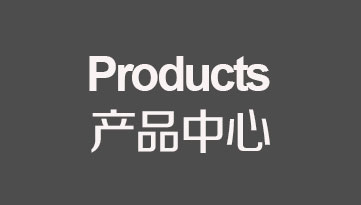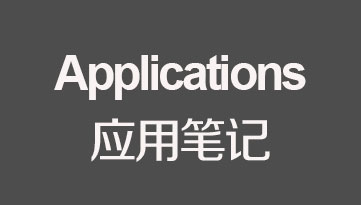China Must Go Beyond Big Fund
In addition to the Big Fund, the Chinese government might also want to pursue vertical integration models to fast-track self-sufficiency in the electronics industry.
We get an earful, all the time, about China’s yen to have its own semiconductor industry and supply chain, independent of the United States. But is China on the right track to do it?
When I visited China this month, I popped the question to domestic and foreign electronics industry executives and a few analysts.
While China’s Big Fund is widely believed to be the right vehicle to deliver the goods, Jean-Christophe Eloy, the president and CEO of Yole Développement, is not so sure.
When I met him in Shenzhen at the Global CEO Summit, I asked him: If you were working for the Chinese government, what advice do you have for China’s electronics industry? While the Big Fund is currently China’s ticket to ride, Eloy said the government might also want to pursue vertical integration models to fast-track self-sufficiency in the electronics industry.
“Take a look at BYD or Huawei,” noted Eloy. Vertical integration is “a model that is very important to China at the moment,” he said, “because it is a good way to make very short connections between the need of the market and supply chain without too many layers in between.”
Jean-Christophe Eloy
Jean-Christophe Eloy
China’s flagship automaker BYD, for example, has begun developing components and technologies necessary for its electric vehicles. EVs need everything from batteries, inverters, power devices and silicon carbide to packaging and integration technologies, Eloy explained. These key technologies go beyond semiconductors.
These same building blocks will be critical not only to EVs, but also to new energy management systems used in wind power or other energy sources, said Eloy. These are areas currently dominated by Germany and Japan. Going vertical will still enable China to develop technologies that will be of use outside those verticals, he explained.
How about RF front-end modules?
The same goes for Huawei and the technologies it needs. For example, RF front-end modules are critical to many wireless applications, including base stations as well as 5G smartphones, explained Eloy. By tackling RF front-end modules, Huawei creates an opportunity to ponder which areas need its attention for developing the necessary technologies, designs and IPs. It’s possible to design a whole integrated module system in China.
The Big Fund plays an important role for China to develop foundational semiconductor devices such as memories and microprocessors. But “they are not everything,” stressed Eloy. The electronics industry needs more and China should look to develop advanced technology.
We asked how the Big Fund first round has performed and what the second round of funding will entail.
Just to recap, the Big Fund — China’s huge capital investment project designed to nurture the domestic semiconductor industry — rolled out its second phase of funding scheduled for the next five years with a budget as big as 204.15 billion yuan ($28.9 billion). Phase II will double the capital of the previous round.
I was mostly curious about how the first round of funding has been evaluated in China. Is Phase I seen as successful? Who’s keeping score? Does anyone have a report card on the Big Fund ROI? More specifically, which chip companies have emerged as China’s champions thanks to the Big Fund?
Perhaps, I was na?ve. It turns out that China has applied very little scrutiny to the Big Fund. After all, who in China would question how wisely (or poorly) the Chinese government is spending its money?
'It's not our money'
The bluntest answer came from an executive at a Chinese fabless chip company: “It isn’t our money after all.” The money companies receive from the Big Fund isn’t like a bank loan, and no recipients feel compelled to look a gift horse in the mouth. Their mission is to spend it and ask for more.
Thus far, results from the first round are mixed. Pressed to name the Chinese semiconductor champions the Big Fund helped build, most executives have no answers. For example, Spreadtrum, which absorbed RDA, was once deemed China’s bright star. It’s hard to judge today where that company, now called Unisoc, stands. In early 2018, the company was reportedly working on a 5G smartphone platform with an Intel 5G modem. But, this summer, Intel sold its smartphone modem business to Apple.
Meanwhile HiSilicon, Huawei’s internal chip division, is one of the leading domestic semiconductor companies. But its success is self-generated, with no evident boost from the Big Fund.
We get an earful, all the time, about China’s yen to have its own semiconductor industry and supply chain, independent of the United States. But is China on the right track to do it?
When I visited China this month, I popped the question to domestic and foreign electronics industry executives and a few analysts.
While China’s Big Fund is widely believed to be the right vehicle to deliver the goods, Jean-Christophe Eloy, the president and CEO of Yole Développement, is not so sure.
When I met him in Shenzhen at the Global CEO Summit, I asked him: If you were working for the Chinese government, what advice do you have for China’s electronics industry? While the Big Fund is currently China’s ticket to ride, Eloy said the government might also want to pursue vertical integration models to fast-track self-sufficiency in the electronics industry.
“Take a look at BYD or Huawei,” noted Eloy. Vertical integration is “a model that is very important to China at the moment,” he said, “because it is a good way to make very short connections between the need of the market and supply chain without too many layers in between.”
Jean-Christophe Eloy
Jean-Christophe Eloy
China’s flagship automaker BYD, for example, has begun developing components and technologies necessary for its electric vehicles. EVs need everything from batteries, inverters, power devices and silicon carbide to packaging and integration technologies, Eloy explained. These key technologies go beyond semiconductors.
These same building blocks will be critical not only to EVs, but also to new energy management systems used in wind power or other energy sources, said Eloy. These are areas currently dominated by Germany and Japan. Going vertical will still enable China to develop technologies that will be of use outside those verticals, he explained.
How about RF front-end modules?
The same goes for Huawei and the technologies it needs. For example, RF front-end modules are critical to many wireless applications, including base stations as well as 5G smartphones, explained Eloy. By tackling RF front-end modules, Huawei creates an opportunity to ponder which areas need its attention for developing the necessary technologies, designs and IPs. It’s possible to design a whole integrated module system in China.
The Big Fund plays an important role for China to develop foundational semiconductor devices such as memories and microprocessors. But “they are not everything,” stressed Eloy. The electronics industry needs more and China should look to develop advanced technology.
We asked how the Big Fund first round has performed and what the second round of funding will entail.
Just to recap, the Big Fund — China’s huge capital investment project designed to nurture the domestic semiconductor industry — rolled out its second phase of funding scheduled for the next five years with a budget as big as 204.15 billion yuan ($28.9 billion). Phase II will double the capital of the previous round.
I was mostly curious about how the first round of funding has been evaluated in China. Is Phase I seen as successful? Who’s keeping score? Does anyone have a report card on the Big Fund ROI? More specifically, which chip companies have emerged as China’s champions thanks to the Big Fund?
Perhaps, I was na?ve. It turns out that China has applied very little scrutiny to the Big Fund. After all, who in China would question how wisely (or poorly) the Chinese government is spending its money?
'It's not our money'
The bluntest answer came from an executive at a Chinese fabless chip company: “It isn’t our money after all.” The money companies receive from the Big Fund isn’t like a bank loan, and no recipients feel compelled to look a gift horse in the mouth. Their mission is to spend it and ask for more.
Thus far, results from the first round are mixed. Pressed to name the Chinese semiconductor champions the Big Fund helped build, most executives have no answers. For example, Spreadtrum, which absorbed RDA, was once deemed China’s bright star. It’s hard to judge today where that company, now called Unisoc, stands. In early 2018, the company was reportedly working on a 5G smartphone platform with an Intel 5G modem. But, this summer, Intel sold its smartphone modem business to Apple.
Meanwhile HiSilicon, Huawei’s internal chip division, is one of the leading domestic semiconductor companies. But its success is self-generated, with no evident boost from the Big Fund.



